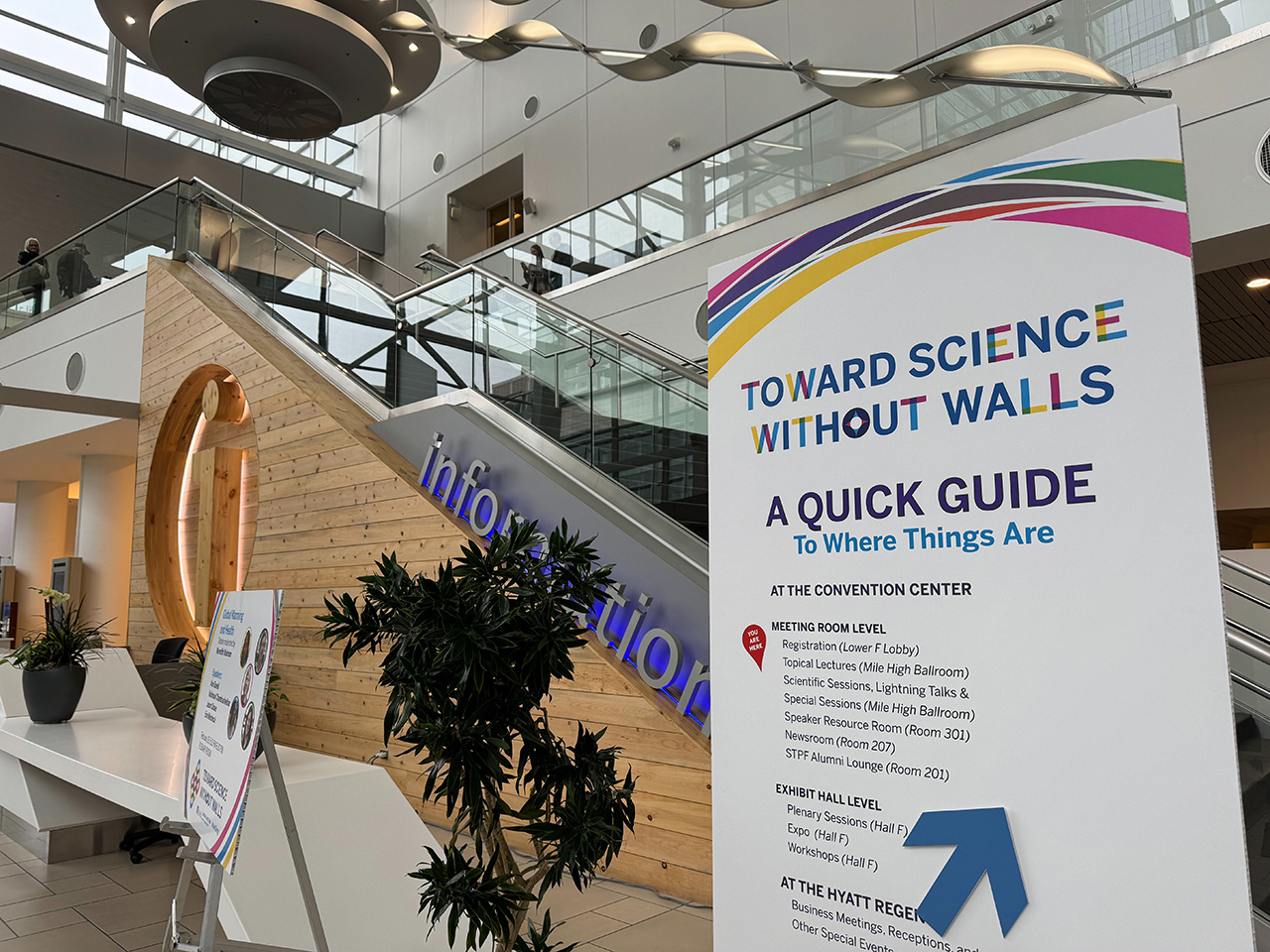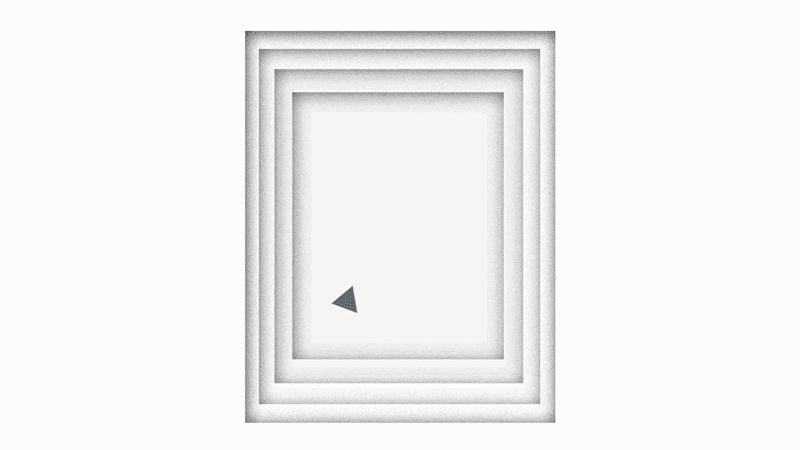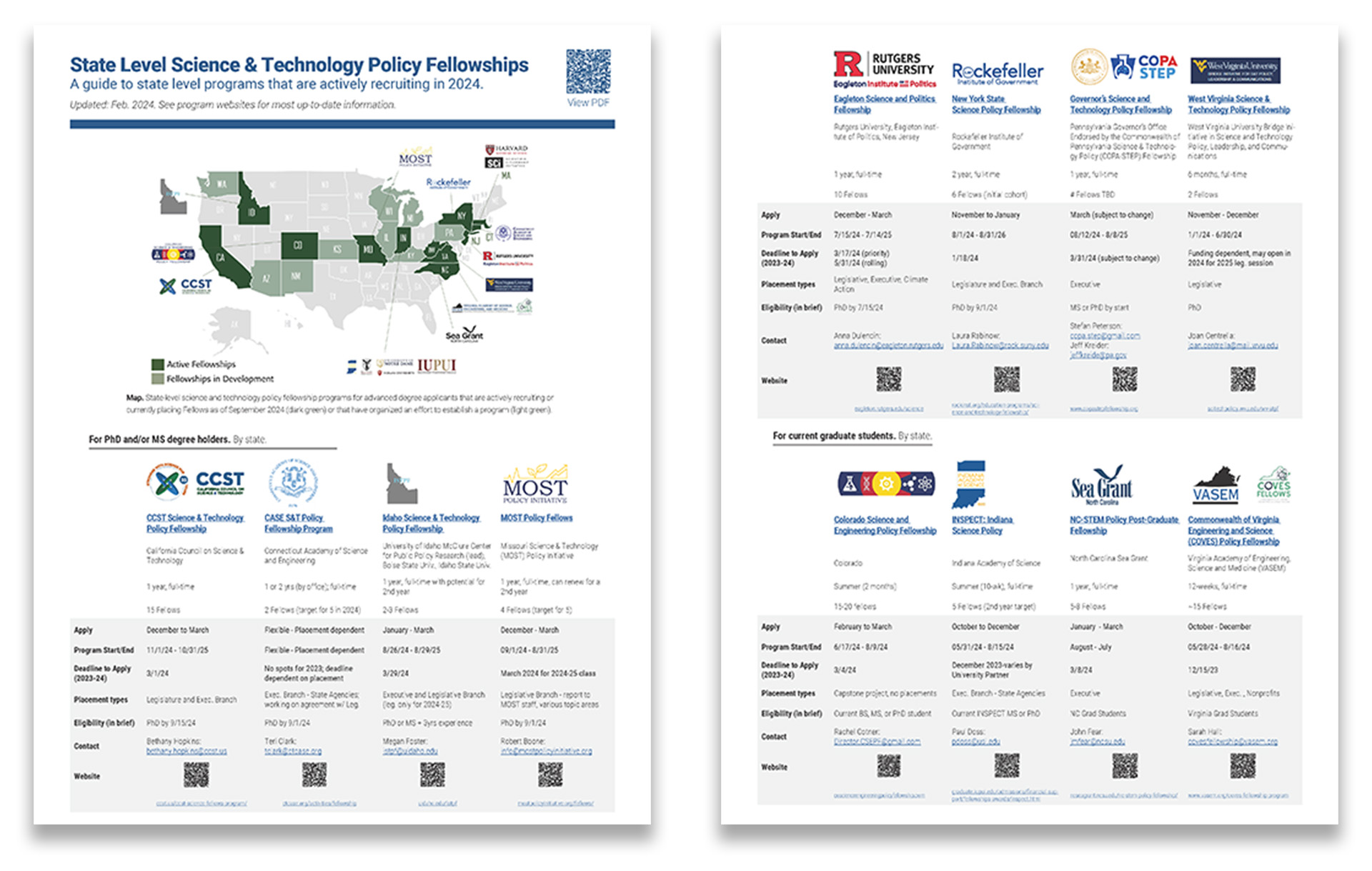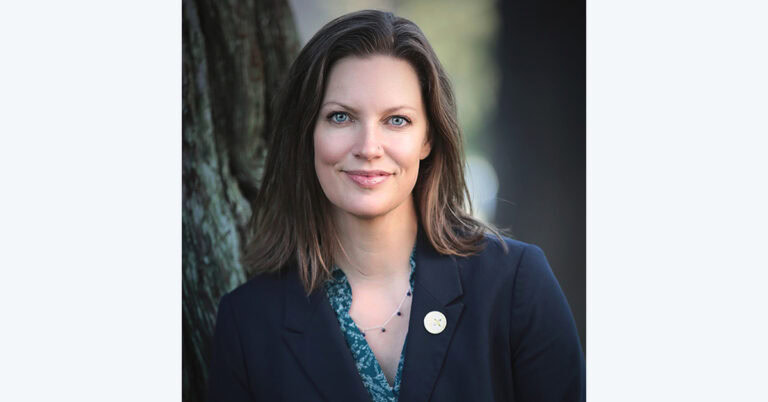Deputy Director
Toward Science (and Science Policy) without Walls
February 23, 2024 | CCST Newsroom, CCST S&T Policy Fellows | Contact: Mikel Shybut


It’s the Journey, Not the Destination
It’s time for the walls that separate scientists from each other and the outside world to come down. This sentiment echoed throughout AAAS 2024 and served as the theme for the conference, “Toward science without walls.”
Chosen by AAAS President Keith Yamamoto, he emphasized his careful choice of words, “toward,” as a vector, an ongoing direction—a path for progress. Going upstream on this path requires creativity and fortitude—people and institutions won’t change overnight.

The opening plenary, featuring AAAS Board Chair Dr. Gilda Barabino, Colorado Governor Jared Polis, Nobel Prize winner (and fellow Grinnellian) Dr. Thomas Cech, and Dr. Yamamoto himself, showed this path is not new, but ongoing.
Cech spoke specifically of the walls separating the traditional departments of chemistry, physics, biology, and engineering:
“Departments that serve the universities so well as a way of organizing their teaching and their research in the last century,” Cech started, “but we find now is more and more inhibiting solving problems where the solution requires multiple expertise.”
Bringing down walls requires pulling threads and finding partners.
Cech and Yamamoto spoke of their decades-long efforts toward incentivizing interdisciplinary work, public engagement, and equitable solutions. Cech spoke of his work as HHMI President to create the Janelia Research Campus, designed to nurture creativity and collaboration, and the University of Colorado Boulder BioFrontiers Institute with its interdisciplinary IQ Biology certificate program.
Bringing down walls requires pulling threads and finding partners.
Yamamoto spoke of his lifetime mentor and PhD advisor Bruce Alberts’ effort to establish the Science and Health Education Partnership. Facing resistance from his own department, Alberts found support from the Dean’s office to sign off on a grant to grow the nascent program.
“Bruce taught me by that example and many other things he said and did,” Yamamoto said, “that scientists are part of a large enterprise that in many ways has control over its own destiny or at least influence over its culture, principle, policies, and practices.”

Last year, Yamamoto shared, AAAS launched Multidisciplinary Working Groups to bring together members from different career stages and disciplines, with an initial group focused on reducing barrier to stem career pathways. He also shared his efforts in the publishing space to make the subscription and licensing models more equitable, highlighting progressive incentive structures of AAAS and PLOS as examples.
An overlapping theme from Cech and Yamamoto’s efforts toward science without walls is that it takes more than motivated individuals to make progress, but also partnership, public engagement, incentive structures, and, importantly, overcoming barriers like funding to do so.
Specifically thinking about the barriers to outreach and engagement, CCST’s John Thompson brought together experts Roberto Delgado from the National Science Foundation and Michael Rios from UC Davis in a workshop moderated by CCST Director of Science Services Brie Lindsey to identify barriers to public and community engagement and means of overcoming them.
“It is important to distinguish between public engagement, which is broad and takes many different forms, and community engagement, which is specific to a population.” Lindsey said at the workshop. “Community engagement refers to the collaborative processes between individuals in the university and a specific community. Ideally, it’s an approach to a discovery process between groups having common interests, to achieve a shared goal or outcome.”

Attendees at the workshop identified a slew of barriers, including lack of resources, trouble finding volunteers, lack of institutional support for the time required to build trust with a new community, language and cultural barriers, timeline constraints, the belief that outreach is not considered important for tenure, and more.
Together, attendees also identified some ways to address those barriers, such as:
- Make environments that support mutual learning and not one-way teaching;
- Work to understand local communities better in order to collaboratively shape work to meet their needs;
- Embrace the idea that communicating ones research to a broader audience can help understand one’s own work and identify new questions;
- Document engagement to show value to funders;
- Develop financial incentives for community engagement such as requiring it in the grant.
The path toward science without walls must be a path that embraces creativity, partnership, and engagement. It does not end at any known destination, but leads toward progress.

States as Laboratories for Democracy
CCST prides itself on thinking creatively and developing strategic partnerships in our effort to remove the barriers that impede societal progress. The theme of the conference paired well with a recurring motif, shared by Terri Clark, Executive Director of the Connecticut Academy of Science and Engineering, among others, that states serve as critical laboratories for democracy.
It was a sentiment echoed in my conversation with artificial intelligence (AI) experts Suresh Venkatasubramanian of Brown University and Matthew Turk of the Toyota Technological Institute at Chicago, when I asked about the role of states in providing guardrails for the use of AI and generative AI.
They emphasized how different attempts by states to address AI will provide important lessons for the federal government. They cited the Illinois Biometric Information Privacy Act (BIPA), enacted in 2008, as a notable early example.
California legislators have introduced a suite of AI related bills this year, including a five-bill package to protect elections from bad actors, a bill requiring safety standards for large scale AI systems, and a bill to lessen bias in AI decision making. Together, they represent examples of how states can serve as laboratories for emerging issues, where policies may ultimately shape federal solutions.
Clark mentioned this concept of states as laboratories at a panel on state level science policy alongside CCST Interim CEO Dr. Sarah Brady and Washington State Academy of Sciences Executive Director Donna Riordan, whose organizations were modeled after the National Academies of Science, Engineering, and Medicine and are tailored to their unique state government structures.
Brady shared a case study on CCST’s disaster resilience work, specifically on wildfires. The formation of an interdisciplinary wildfire advisory body set CCST on a path that they couldn’t predict.

Weaving the story together, Brady shared that what began as a series of CCST expert briefings on topics identified by the advisory body led to major findings on the astronomical amount of unknown costs of wildfires (estimated in the billions); building partnerships between the public health and forestry communities to lessen the long term impacts of wildfire smoke; and delivering actionable recommendations to Congress via a wildfire policy accelerator.
“What I want the key takeaway here to be is that there are continued opportunities to partner with CCST,” Brady closed. “What we do in our state, what the other states do, are not limited to our state borders. There are opportunities to work together and in particular there are really significant opportunities for states to inform federal policy. The key is building trusted relationships between scientists, policymakers, and various organizations who can have increased impact by working together.”
Building on this message, Riordan emphasized the importance of state-level advising.
“I’m kind of an evangelist for science and policy advising at the state level,” Riordan said. “The real key to science policy advising is understanding the legislative and executive structures of the states where you live and that includes knowing your elected officials.” Riordan closed on an important point emphasizing the need for scientists to engage with policymakers and to share their expertise. “They can use their analytic training and skills to be objective and share and inform where they live. And that is not lobbying. It’s not lobbying to talk to elected officials and let them know what you know.”
A Bright Future for Science Policy
For those who need a reason to feel optimistic about the future of science policy, this year’s conference was a showcase for a burgeoning science policy community that is expanding and charting a course to break down walls between scientists, policymakers, and the public.
Modeled after the immensely successful and ever impactful AAAS Science and Technology Policy Fellowship, CCST founded the first state level fellowship of its kind in 2009 that today places up to 15 PhD scientists, engineers, and social scientists in the Legislature, state agencies, and offices of the Governor. The program is now celebrating its 15thclass of Fellows this year.
In an environment ripe for silos, these state-level leaders chose collaboration.
In attendance at AAAS were CCST Fellowship Director Puneet Bhullar and Manager Bethany Hopkins, along with alumni including myself, Brie Lindsey, John Thompson, Sarah Brady, Julianne McCall, Hannah Frye, Chanel Matney and current Fellow Max Ladow to chat with potential applicants. The fellowship program is accepting applications for the 2025 cohort through March 11th.
In 2016, CCST published a report identifying successful components of a state-level science policy fellowship program, serving as a model and a supporter of developing programs nationwide. That report was updated in 2022, highlighting the major movement in this space and the huge opportunities ahead.

At AAAS 2024, you could—literally—see the progress in this space in the form of a large map. After several years of effort and philanthropic support to bring this successful model to other states, our shared booth displayed a map of 21 states that have either established a fellowship program or are taking steps to do so.

Even more, these state-level fellowships are working together to learn from, support, and promote each other, with each program being tailored to the unique structure and needs of their governments. In an environment ripe for silos, these state-level leaders chose collaboration.
“There is a strong demand for science policy right now,” said CCST Interim Director of Policy Engagement Puneet Bhullar. “Every state can stand to benefit from a program that taps into the talents and creativity that Fellows bring. It’s exciting to see so many state Fellowship programs represented at AAAS.”
Every new program creates more opportunities for scientists and graduate students to launch their careers in a new and exciting direction—at the mutual benefit of their state’s policies.

Other organizations at AAAS 2024 provide ongoing opportunities to engage in science policy. The National Science Policy Network has built a robust network of students and professional members in a matter of years—demonstrating the high demand for science policy and providing an invaluable resource for sharing fellowship and other career opportunities. They’ll be hosting their annual symposium in April.
The nonprofit Journal of Science Policy and Governance, featuring newly minted CEO and CCST alum Julianne McCall, provides a forum for graduate students, postdocs, policy fellows, and young scholars to share policy research and innovative ideas—in an open access and peer-reviewed format.
These opportunities only scratch the surface of where science policy is heading, and promise a strong future for developing leaders in this space, ultimately driving toward science—and science policy—without walls.

—
Photos and Graphics: Mikel Shybut.
###
About the California Council on Science and Technology
The California Council on Science and Technology is a nonpartisan, nonprofit organization established via the California State Legislature in 1988. CCST responds to the Governor, the Legislature, and other State entities who request independent assessment of public policy issues affecting the State of California relating to science and technology. CCST engages leading experts in science and technology to advise state policymakers—ensuring that California policy is strengthened and informed by scientific knowledge, research, and innovation.




